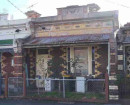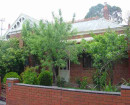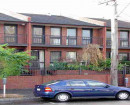Back to search results
ELLEN KELLY HOMESTEAD SITE
GRETA ROAD GLENROWAN WEST, BENALLA RURAL CITY
ELLEN KELLY HOMESTEAD SITE
GRETA ROAD GLENROWAN WEST, BENALLA RURAL CITY
All information on this page is maintained by Heritage Victoria.
Click below for their website and contact details.
Victorian Heritage Register
-
Add to tour
You must log in to do that.
-
Share
-
Shortlist place
You must log in to do that.
- Download report
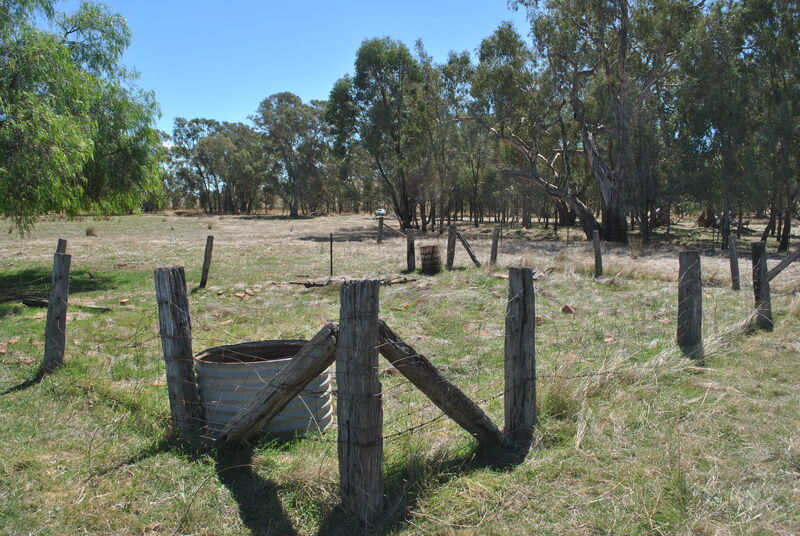
Homestead footprint March 2020


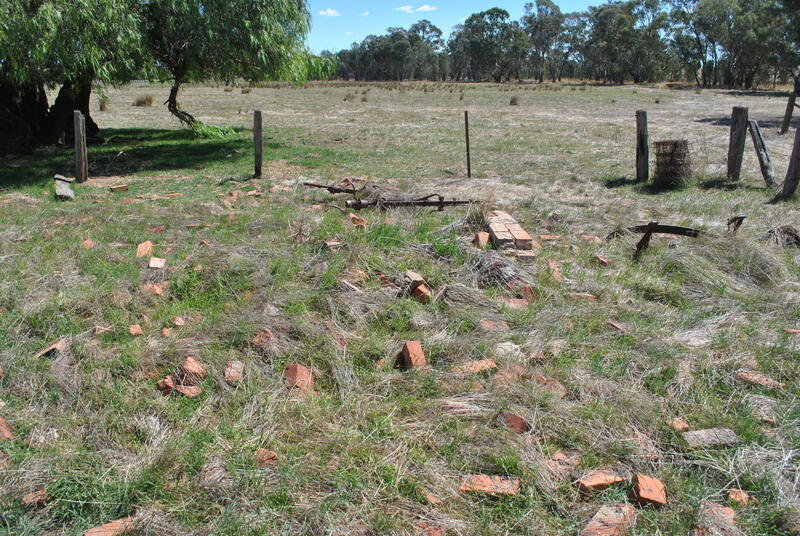
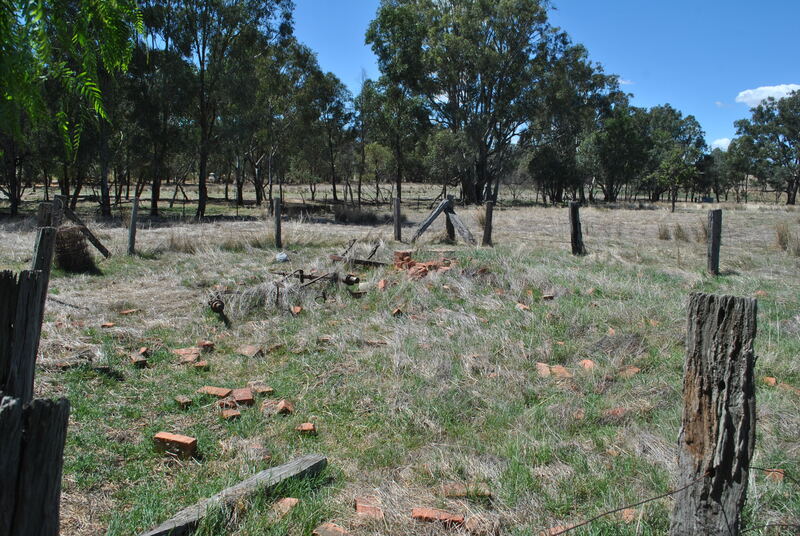
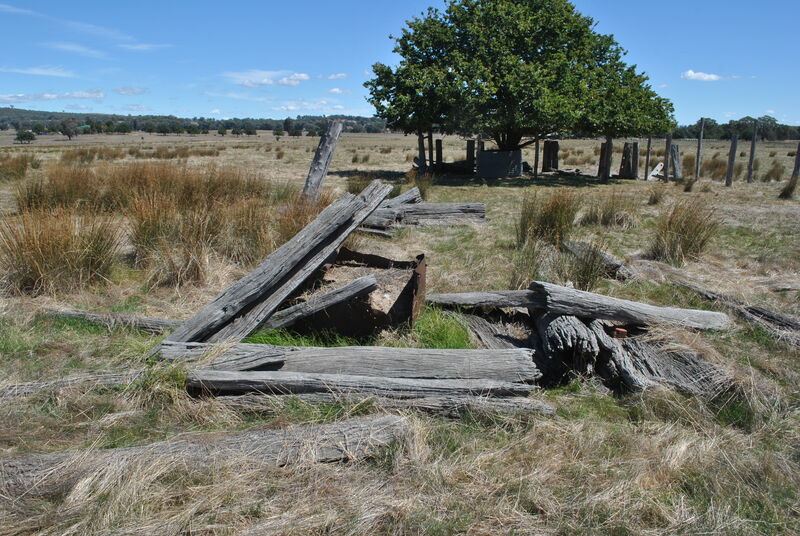
On this page:
Statement of Significance
What is significant?
The Ellen Kelly Homestead Site including surface remains of the Kelly family dwelling including remnant garden; remains of the stables and forge, other archaeological deposits, features and artefacts; plantings and landscape setting on the banks of Eleven Mile Creek.
How is it significant?
The Ellen Kelly Homestead Site is of historical and archaeological significance to the State of Victoria. It satisfies the following criterion for inclusion in the Victorian Heritage Register:
Criterion A: Importance to the course, or pattern, of Victoria’s cultural history.
Criterion C: Potential to yield information that will contribute to an understanding of Victoria’s cultural history.
Criterion H: Special association with the life or works of a person, or group of persons, of importance in Victoria’s history.
Why is it significant?
The Ellen Kelly Homestead Site is historically significant for its association with the ‘Fitzpatrick incident’, which is widely regarded as the trigger event for the Kelly Outbreak. The outbreak comprised a series of acts committed by the bushranger Ned Kelly and his gang, beginning with his shooting of Constable Alexander Fitzpatrick at the Kelly family home in October 1878 and reaching a climax at the siege of Glenrowan in June 1880. Stories of the Kelly Gang’s activities have permeated Australian culture for the past 140 years and continue to have considerable influence on disciplines from academia to literature, the arts and tourism. [Criterion A]
The Ellen Kelly Homestead Site is archaeologically significant for its potential to yield information that will contribute to an understanding of Victoria’s cultural history. There is high potential for the place to contain archaeological evidence relating to the construction and occupation of the Kelly family dwellings, including foundational features and building materials. The Ellen Kelly Homestead Site is also archaeologically significant for its potential to reveal currently unavailable information regarding the Kelly family’s material domestic life. [Criterion C]
The Ellen Kelly Homestead Site is significant for its direct association with the early life of Ned Kelly (1854-80) and his mother Ellen Kelly (1832-1923). Kelly lived at his mother’s selection for ten years and is credited as one of the builders of the former dwelling, along with his associates Joe Byrne, Bill Skilling and Brickey Williamson. [Criterion H]
Show more
Show less
-
-
ELLEN KELLY HOMESTEAD SITE - History
Greta and the Land Acts
Between the European invasion of Victoria and the 1860s, most of the people residing in the rural parts of the colony were Aboriginal people and small number of squatters, the latter holding large pastoral runs under licence. Following the discovery of gold in 1851, the colony’s population boomed, and there was an increased demand for land. To break the squatters’ hold on rural Victoria, the colonial government introduced a series of Acts — beginning with the Land Act 1860 — which permitted prospective non-Aboriginal people to select rural allotments or ‘selections’ for farming. The Amending Land Act 1865 (the ‘Grant Act’) in particular provided non-Aboriginal people with modest means (such as the Kelly family) the opportunity to purchase farming land, provided that certain conditions were met during a three-year lease period. These Acts and others like them facilitated the dispossession of land from Victoria’s Aboriginal people as part of the larger process of colonisation.[1]Between 1860 and 1866, the land surrounding Greta township was surveyed for selection and sale under the early iterations of the Land Act.[2] Much of the surveyed area comprised portions of the Kilfera Run, owned by Robert McBean (McBain), and included what would eventually be known as Crown Allotment 57a, Parish of Lurg: the site of the Ellen Kelly Homestead Site.[3]
The Kelly family selection at Greta (1868-1877)
Following the death of her husband John Kelly in 1866, Ellen Kelly moved to Greta with her seven children. The family briefly resided with two of Ellen Kelly’s sisters, and then in Wangaratta, before taking up the homestead on Allotment 57a in late 1868.[4] During her stay in Wangaratta, Ellen Kelly had found employment washing clothes and making dresses to save for the required six months’ advance in rental payments.[5] The selection consisted of 88 (sometimes cited as 90) acres of land south of Greta Road, with the tree-lined course of Eleven Mile Creek running through its north-east corner.During their first decade at the homestead, the Kelly family resided in a 12 feet (4 metres) wide bark slab hut constructed by the previous occupant. Internally, the hut was an open space with no separate rooms. To introduce some semblance of privacy Ellen Kelly suspended rugs and blankets from the tie-beams, creating five ‘rooms’.[6] This hut (no longer extant) was in the vicinity of the 1878 homestead but its exact location is unknown.From 1868, Ellen Kelly commenced work on improving the selection. Under the Amending Land Act 1865, selectors were permitted to occupy agricultural allotments providing that they paid rent six months in advance and that no part of the leased land was assigned or sublet. The introduction of a new Act in 1869 further permitted selectors to either purchase land outright or commit to a new seven-year lease with the intention of eventual ownership, upon the condition that improvements to the value of £1 were made on the land.[7] Ellen Kelly was granted a seven-year lease in June 1869, having commenced improvements to the selection including the clearing of scrub and construction of a property boundary fence – some of which was possibly undertaken by her oldest son, Ned.[8]By April 1870 Ellen Kelly had fallen behind in rent payments, but the family was permitted to continue residing in their bark hut.[9] To support her large and growing family, Ellen Kelly offered food and board to travellers at a price. In 1874 she married George King, with whom she had three children.
Construction of the homestead (1877-1878)Between 1877 and 1878, a new residence was built on the Kelly selection near the south bank of Eleven Mile Creek. Constructed by Ned Kelly (and likely Joe Byrne, Brickey Williamson and Bill Skilling), the residence provided a more substantial home for the growing family. Built from ironbark slabs and sheets, the residence contained four rooms (three bedrooms and a kitchen-dining area) and an unfloored verandah. The residence also had a stone fireplace, with a chimney constructed from ‘slabs and split palings lined with tin’ and store-bought windows.[10] Having occupied and improved the selection for seven years, Ellen Kelly applied to purchase the land in 1877.[11]Events at the homestead (1878-1881)Several pivotal events in Ned Kelly’s adolescence and early adulthood unfolded while he was living at the homestead. Most notably was the attack on Constable Alexander Fitzpatrick in April 1878. While accounts vary as to how it escalated it is likely that the violent encounter resulted in Ned Kelly shooting Fitzpatrick. Ned Kelly and his brother Dan subsequently fled to the bush to avoid capture, becoming wanted fugitives and forming the Kelly Gang with Joe Byrne and Steve Hart. In the meantime, Ellen Kelly was arrested and imprisoned for the attempted murder of a police officer. She was sentenced to three years hard labour in Melbourne Gaol. The events known as the Kelly Outbreak unfolded over the course of her imprisonment, while the younger Kelly children continued to live at the homestead. During this time, the homestead was subject to various police searches.The Kellys and Griffiths (1881 – present)Ellen Kelly was released from Melbourne Gaol in February 1881 and returned to live at the homestead with her children. In April 1882, the selection was once again forfeited and ‘reserved for public purposes’.[12] Although she was charged with illegal occupation and fined five shillings, Ellen Kelly continued to live at the homestead and commenced a new seven-year lease of the selection, as permitted under the Land Act 1869. The implementation of the Married Women’s Property Act in 1884 meant that Ellen Kelly could purchase the selection, although it was not until 1891 that she did so.[13]In 1895 Ellen Kelly sold the selection to her son-in-law, Edward Griffiths, who owned the adjoining allotment to the east.[14] Griffiths carried out several alterations to the 1878 dwelling over the following decades, including the addition of timber cottage extensions and an iron roof.[15] The dwelling complex began to deteriorate from the c.1950s, with only two brick chimneys visible by 1980.[16]
[1] Nelson, Phillippa and Alves, Lesley, Lands Guide: A guide to finding records of Crown Land at Public Record Office Victoria, Public Record Office Victoria, 2009, p. 52.[2] Ellis, S. E., ‘A history of Greta [manuscript]’, 1940, p.3.[3] Morrissey, Doug, Ned Kelly: selectors, squatter and stock thieves, Connor Court, 2018, pp. 120-21.[4] Jones, Ian (1995), pp.27-28.[5] Jones, Ian (1995), p.30; ‘The Land Act of 1865’, The Australian News for Home Readers, Wed 19 Apr 1865, p.12.[6] Jones, Ian (1995), p.30; Kieza, Grantlee (2017), Mrs Kelly, p.179.[7] Nelson, Phillippa & Alves, Lesley (2009), Lands Guide: A guide to finding records of Crown land at Public Record Office Victoria, p.52.[8] Jones, Ian (1995), pp.35-7.[9] The Benalla Ensign and Farmer’s and Squatter’s Journal, Fri 22 Apr 1870, p.2.[10] Jones, Ian (1995), p.105.[11] The North Eastern Ensign, Tue 4 Jul 1882, p.2.[12] The North Eastern Ensign, Tue 4 Jul 1882, p.2.[13] Jones, Ian (1995), p.30.[14] Gill, K. F., ‘The Kelly homes and Greta West land history’, 2017, p.12.[15] Cookson, B.W., ‘The Kelly Gang from within [series]’, The Sun, 27 August – 24 September 1911.[16] Warden, I., ‘In search of Ned Kelly’, in The Canberra Times, Sat 29 Nov 1980, p.17.ELLEN KELLY HOMESTEAD SITE - Assessment Against Criteria
The Ellen Kelly Homestead Site is of historical and archaeological significance to the State of Victoria. It satisfies Criteria A, C and H for inclusion in the Victorian Heritage Register.
ELLEN KELLY HOMESTEAD SITE - Permit Exemptions
General Exemptions:General exemptions apply to all places and objects included in the Victorian Heritage Register (VHR). General exemptions have been designed to allow everyday activities, maintenance and changes to your property, which don’t harm its cultural heritage significance, to proceed without the need to obtain approvals under the Heritage Act 2017.Places of worship: In some circumstances, you can alter a place of worship to accommodate religious practices without a permit, but you must notify the Executive Director of Heritage Victoria before you start the works or activities at least 20 business days before the works or activities are to commence.Subdivision/consolidation: Permit exemptions exist for some subdivisions and consolidations. If the subdivision or consolidation is in accordance with a planning permit granted under Part 4 of the Planning and Environment Act 1987 and the application for the planning permit was referred to the Executive Director of Heritage Victoria as a determining referral authority, a permit is not required.Specific exemptions may also apply to your registered place or object. If applicable, these are listed below. Specific exemptions are tailored to the conservation and management needs of an individual registered place or object and set out works and activities that are exempt from the requirements of a permit. Specific exemptions prevail if they conflict with general exemptions. Find out more about heritage permit exemptions here.Specific Exemptions:Introduction
The purpose of this information is to assist owners and other interested parties when considering or making decisions regarding works to a registered place or object. It is recommended that any proposed works be discussed with an officer of Heritage Victoria prior to making a permit application. Discussing proposed works will assist in answering questions the owner may have and aid any decisions regarding works to the place or object.
It is acknowledged that alterations and other works may be required to keep places and objects in good repair and adapt them for use into the future. However, under the Act a person must not knowingly, recklessly or negligently remove, relocate or demolish, damage or despoil, develop or alter or excavate all or any part of any part of a registered place without approval. It should be noted that the definition of ‘develop’ in the Act includes any works on, over or under the place.
If a person wishes to undertake works or activities in relation to a registered place or registered object, they must apply to the Executive Director for a permit. The purpose of a permit is to enable appropriate change to a place or object and to effectively manage adverse impacts on the cultural heritage significance of a place or object as a consequence of change. If an owner is uncertain whether a heritage permit is required, it is recommended that Heritage Victoria be contacted.
Permits are required for anything which alters the place or object, unless a permit exemption is granted. Permit exemptions usually cover routine maintenance and upkeep issues faced by owners as well as minor works or works to the elements of the place or object that are not significant. They may include appropriate works that are specified in a conservation management plan. Permit exemptions can be granted at the time of registration (under section 38 of the Act) or after registration (under section 92 of the Act). It should be noted that the addition of new buildings to the registered place, as well as alterations to the interior and exterior of existing buildings requires a permit, unless a specific permit exemption is granted.
Disrepair of a registered place or object
Under section 152 of the Act, the owner of a registered place or registered object must not allow that place or object to fall into disrepair.
Failure to maintain registered place or registered object
Under section 153 of the Act, the owner of a registered place or registered object must not fail to maintain that place or object to the extent that its conservation is threatened.
Conservation management plans
It is recommended that a Conservation Management Plan is developed to manage the place in a manner which respects its cultural heritage significance.
Aboriginal cultural heritage
If works are proposed which have the potential to disturb or have an impact on Aboriginal cultural heritage it is necessary to contact Aboriginal Victoria to ascertain any requirements under the Aboriginal Heritage Act 2006.If any Aboriginal cultural heritage is discovered or exposed at any time it is necessary to immediately contact First Peoples – State Relations (formerly Aboriginal Victoria) to ascertain requirements under the Aboriginal Heritage Act 2006.
Other approvals
Please be aware that approval from other authorities (such as local government) may be required to undertake works.
Archaeology
Ground disturbance may affect the archaeological significance of the place and, subject to the exemptions stated in this document, requires a permit.
Notes
· All works should ideally be informed by a Conservation Management Plan prepared for the place. The Executive Director is not bound by any Conservation Management Plan and permits still must be obtained for works suggested in any Conservation Management Plan.· Nothing in this determination prevents the Heritage Council from amending or rescinding all or any of the permit exemptions.· Nothing in this determination exempts owners or their agents from the responsibility to seek relevant planning or building permits where applicable.General Conditions
· All exempted alterations are to be planned and carried out in a manner which prevents damage to the fabric of the registered place.· Should it become apparent during further inspection or the carrying out of works that original or previously hidden or inaccessible details of the place are revealed which relate to the significance of the place, then the exemption covering such works must cease and Heritage Victoria must be notified as soon as possible.Specific Permit Exemptions
The following categories of works or activities (permit exemptions) do not require a permit from Heritage Victoria. They are considered not to cause harm to the cultural heritage significance of the place and have been developed in consultation with the owner.
Outside the Fenced Homestead Area· The continuation of existing agricultural practices including management of livestock, grazing and other processes necessary for usual agricultural operation. (Agricultural activities which involve subsurface works are not permit exempt under this specific permit exemption.)· The processes of mowing, pruning, removal of dead or diseased plants, disease and weed control and maintenance to care for existing plants.· Removal of tree seedlings and suckers, environmental and noxious weeds.· Management and maintenance of trees including formative and remedial pruning, removal of deadwood and pest and disease control.· Emergency tree works to maintain safety.· Maintenance, repair or removal of fences and gates necessary for the continuation of agricultural or pastoral activities. This does not include the fence surrounding the homestead area (see below).· Installation of fences and gates necessary for the continuation of agricultural or pastoral activities, where they are located at a distance more than 20 metres from the existing fence line surrounding the footprint of the former homestead, and at a distance more than 20 metres from the stables and forge area as marked 3 and 4 on the plan.· The construction of farm access roads, comprised of gravel or earth, where they are located at a distance more than 20 metres from the existing fence line surrounding the footprint of the former homestead, and at a distance more than 20 metres from the stables and forge area as marked 3 and 4 on the plan.· The construction of subsurface water mains, irrigation systems and pipelines where they are located at a distance more than 20 metres from the existing fence line surrounding the footprint of the former homestead, and at a distance more than 20 metres from the stables and forge area as marked 3 and 4 on the plan.· The removal or pruning of dead or dangerous trees.· Vegetation protection and management of possums and vermin.· Fire suppression and firefighting activities such as fuel reduction burns and fire control line construction, provided all heritage features associated with areas 1, 2, 3 and 4 identified on the plan are protected.Inside the Fenced Homestead Area· The processes of pruning, removal of dead or diseased plants (excluding trees), disease and weed control and maintenance to care for existing plants.· Repair and maintenance of the fence surrounding the homestead area.Other works may also be exempted from the need for a permit, subject to discussion with Heritage Victoria (under s.92(3) of the Act).
-
-
-
-
-
ELLEN KELLY HOMESTEAD SITE
 Victorian Heritage Register H2410
Victorian Heritage Register H2410
-
177 Fenwick Street
 Yarra City
Yarra City -
19 Cambridge Street
 Yarra City
Yarra City -
2 Derby Street
 Yarra City
Yarra City
-
-





